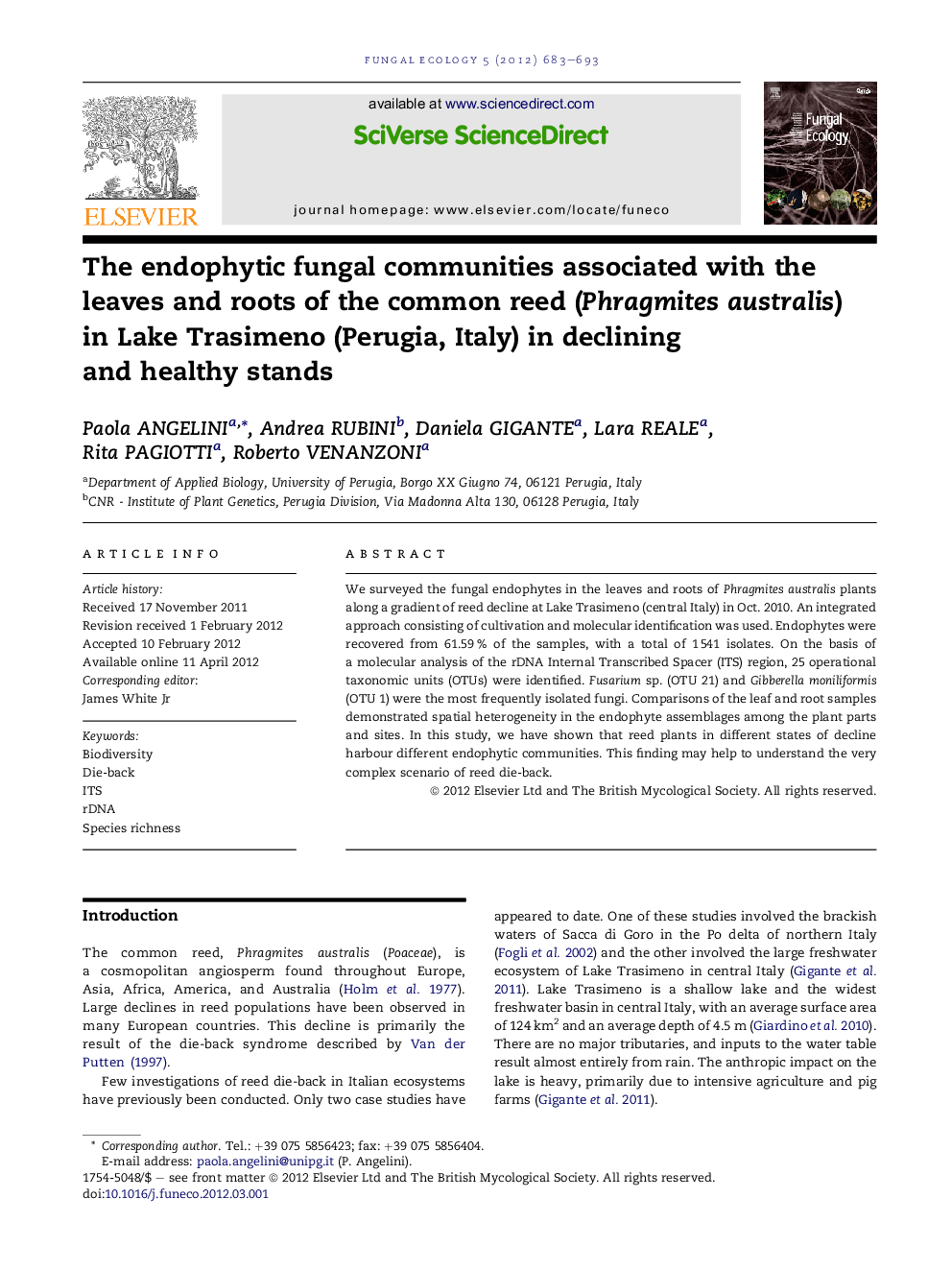| Article ID | Journal | Published Year | Pages | File Type |
|---|---|---|---|---|
| 2053652 | Fungal Ecology | 2012 | 11 Pages |
We surveyed the fungal endophytes in the leaves and roots of Phragmites australis plants along a gradient of reed decline at Lake Trasimeno (central Italy) in Oct. 2010. An integrated approach consisting of cultivation and molecular identification was used. Endophytes were recovered from 61.59 % of the samples, with a total of 1 541 isolates. On the basis of a molecular analysis of the rDNA Internal Transcribed Spacer (ITS) region, 25 operational taxonomic units (OTUs) were identified. Fusarium sp. (OTU 21) and Gibberella moniliformis (OTU 1) were the most frequently isolated fungi. Comparisons of the leaf and root samples demonstrated spatial heterogeneity in the endophyte assemblages among the plant parts and sites. In this study, we have shown that reed plants in different states of decline harbour different endophytic communities. This finding may help to understand the very complex scenario of reed die-back.
► We surveyed the P. australis fungal endophytes as possible contributors to reed die-back. ► We examined changes in the endophyte presence, distribution and diversity along a gradient of reed decline. ► Differences in the endophytic fungal communities between healthy and declining sites are primarily qualitative. ► A number of taxa known as pathogens were more abundant at the declining sites.
